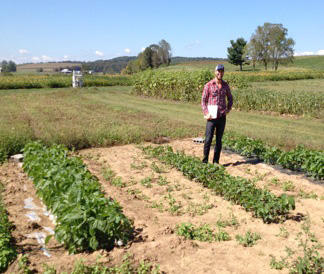GRIFFIN, Georgia – The Southern Sustainable Agriculture Research and Education (SSARE) program has released the 2020 Call for Proposals for Graduate Student Grants.
Southern SARE Graduate Student Grants are very competitive. To be considered for funding, proposals must demonstrate a direct relationship between the approach and methods used and the project’s relevance to sustainable agriculture.
Proposal submission deadline is May 1, 2020 at 5 p.m. EST. Download the Call for Proposals and carefully read the proposal application instructions. All of the guidelines, program goals, review criteria, and the submission process to apply for a Southern SARE Graduate Student Grant can be found within the Call for Proposals.
Research projects that fully address issues of sustainable agriculture of current and potential importance to the Southern region are eligible for submission. Maximum funds awarded for projects are $16,500 for up to two years’ work on the student’s project. Grant awards are announced in September.
Published by the Southern Region of the Sustainable Agriculture Research and Education (SARE) program. Funded by the USDA National Institute of Food and Agriculture (NIFA), Southern SARE operates under cooperative agreements with the University of Georgia, Fort Valley State University, and the Kerr Center for Sustainable Agriculture to offer competitive grants to advance sustainable agriculture in America's Southern region. This material is based upon work that is supported by the National Institute of Food and Agriculture, U.S. Department of Agriculture, through Southern Sustainable Agriculture Research and Education. USDA is an equal opportunity employer and service provider. Any opinions, findings, conclusions, or recommendations expressed in this publication are those of the author(s) and do not necessarily reflect the view of the U.S. Department of Agriculture.
